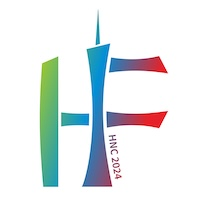Speaker
Description
The energy-energy correlator (EEC) is considered a powerful probe of jet substructure. To study the utility of such observable for quark vs gluon discrimination of jet quenching phenomenon, this work first predicts the energy-energy correlators of inclusive jets in central~($0-10\%$) Pb+Pb collisions at $\sqrt{\rm s}$ = 5.02 TeV for jet transverse momentum interval $40 - 60$ GeV. The Pb+Pb EEC distribution shifts to larger $R_{\rm L}$ and smaller $R_{\rm L}$ simultaneously. The shift towards larger $R_{\rm L}$ is attributed to the energy loss effect when the jet evolves in the hot/dense medium and the shift towards smaller $R_{\rm L}$ is due to the selection bias effects. Moreover, we find the EEC distribution for pure quark jets in nucleus-nucleus (A+A) collisions will only be suffering even stronger enhancement at $R_{\rm L}> 0.2$, and the EEC distribution for pure gluon jets in A+A collisions will be observed shifting toward smaller and larger $R_{\rm L}$ at the same time. The jet quenching patterns (A+A/p+p) of the quark jets and the gluon jets can then be separated. We also find that the differences are mainly determined by the initial EEC distribution in p+p, and are not affected much by the energy loss differences between quark and gluon. Inclusive jets are dominated by gluon jets and photon-tagged jets are used to represent quark jets, we propose this double-ratio measurement to demonstrate the quark/gluon discrimination for the jet quenching phenomenon of jet substructures. The impact of the medium response effect is also discussed.
